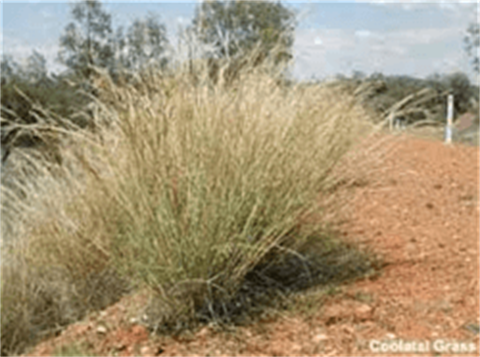
Welcome to the sixth article in our Weed of the Week series, where we’ll be sharing information on our region’s priority weeds. This week we’re looking at an emerging threat in our region – Coolatai Grass.
Snowy Monaro Regional Council is calling on all community members to get to know our region’s weeds so we can all play our part in protecting our environment, helping our farmers and supporting our community.
The impact of weeds on our community can be devastating and is estimated to cost the NSW economy about $1.8 billion annually (NSW Department of Industry, 2018).
What is Coolatai Grass?
Coolatai grass is a long-lived, summer active perennial that grows to 1.5 metres tall and produces short rhizomes (underground stems) forming a dense grass tussock. It has greyish-green leaves that turn orangey-red in winter, particularly after frost.
Leaf sheaths are usually hairless and keeled. The leaf blade is flat and 2-3 mm wide with the ligule 2-3 mm long and minutely toothed.
The most obvious characteristic is the paired racemes (flower clusters) that adorn the plant in late spring through to autumn.
In the Snowy Monaro region, Coolatai grass is not well established. Several small patches are known to occur on the Monaro Highway north of Cooma which are vigilantly monitored and controlled by Council staff. Due to its very limited extent in our region and high feasibility of control, Coolatai grass is prioritised for management action.
Why is Coolatai Grass a problem?
Coolatai Grass easily invades relatively undisturbed ecosystems and pastures, and comes to dominate them. It is especially invasive in areas with low ground cover (less than 70%), commonly due to heavy grazing and low soil fertility.
- It grows on a range of soils, most active on light and medium textured soils
- It is cold tolerant and grows anywhere from sea level to 1500m elevation
- It easily survives hot fires. Regular burning has no negative impact on plant numbers
- It quickly dominates pastures, leading to tall rank growth that:
- ooffers low digestibility (
- ooffers low protein (
- can severely limit sheep production
- increases feed supplementation requirements in cattle grazing enterprises
- Increases fire risk
- Seed sheds quickly on maturity
- Seeds readily stick to animal hair and wool and can survive digestion
- Roadsides are particularly at risk of invasion due to roadside slashing practices
- Poses a particular threat to fragmented stands of native vegetation
What can you do?
- Learn to identify Coolatai Grass and seek immediate advice if it is identified on your property
- Monitor high risk sites, eg access tracks, feedout areas
- Map infestations
- Remove plants, bag and burn, try to stop seed being dropped in the process
- Spot spray with a knockdown herbicide or manually remove the plants
- It may be useful to sow some replacement competitive pasture species in disturbed areas to compete with new germinations of Coolatai grass
- Competitive pastures (where ground cover is maintained at >70%) will be more resistant to Coolatai grass invasion
- Council’s Biosecurity officers can assist with identification and provide advice on best management practices
Download the free NSW WeedWise app for detailed information on how to identify and manage local priority weeds. Visit
Visit Council’s website to understand how we can help you with weed management.








